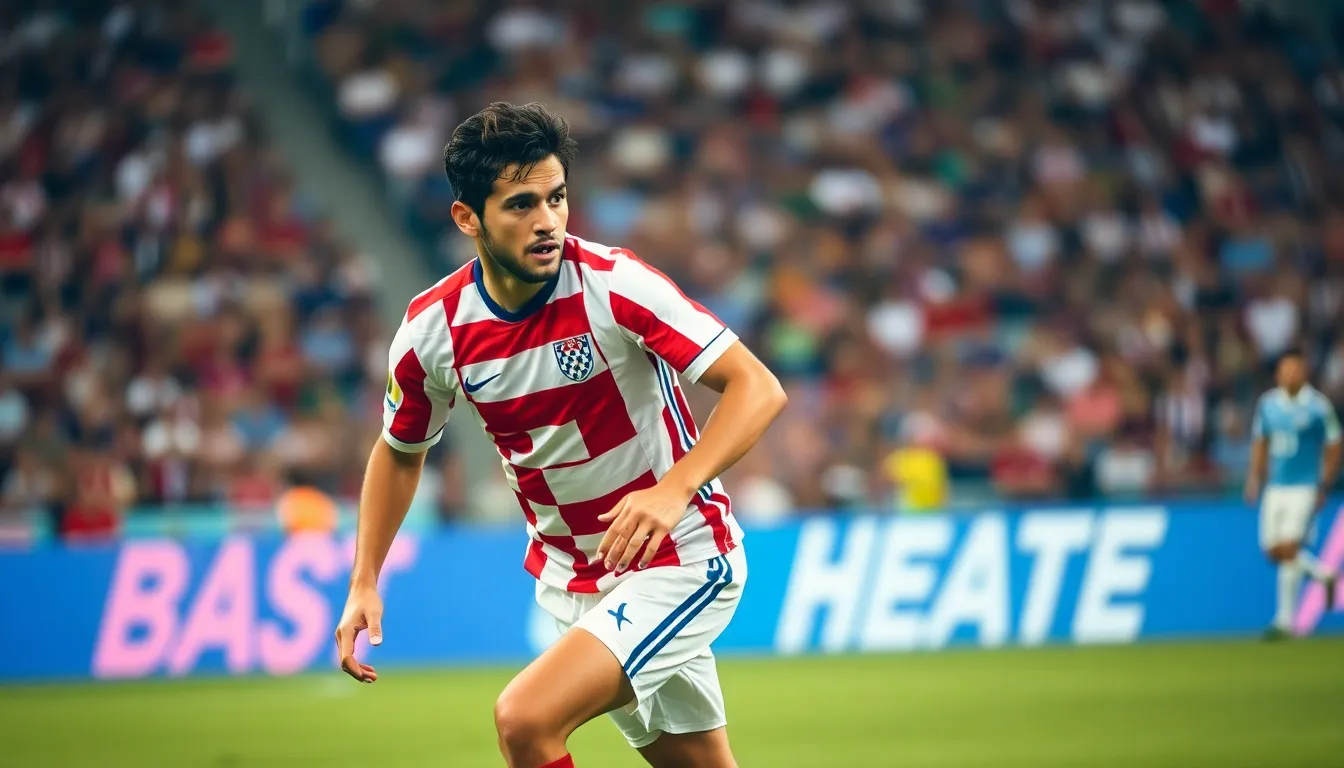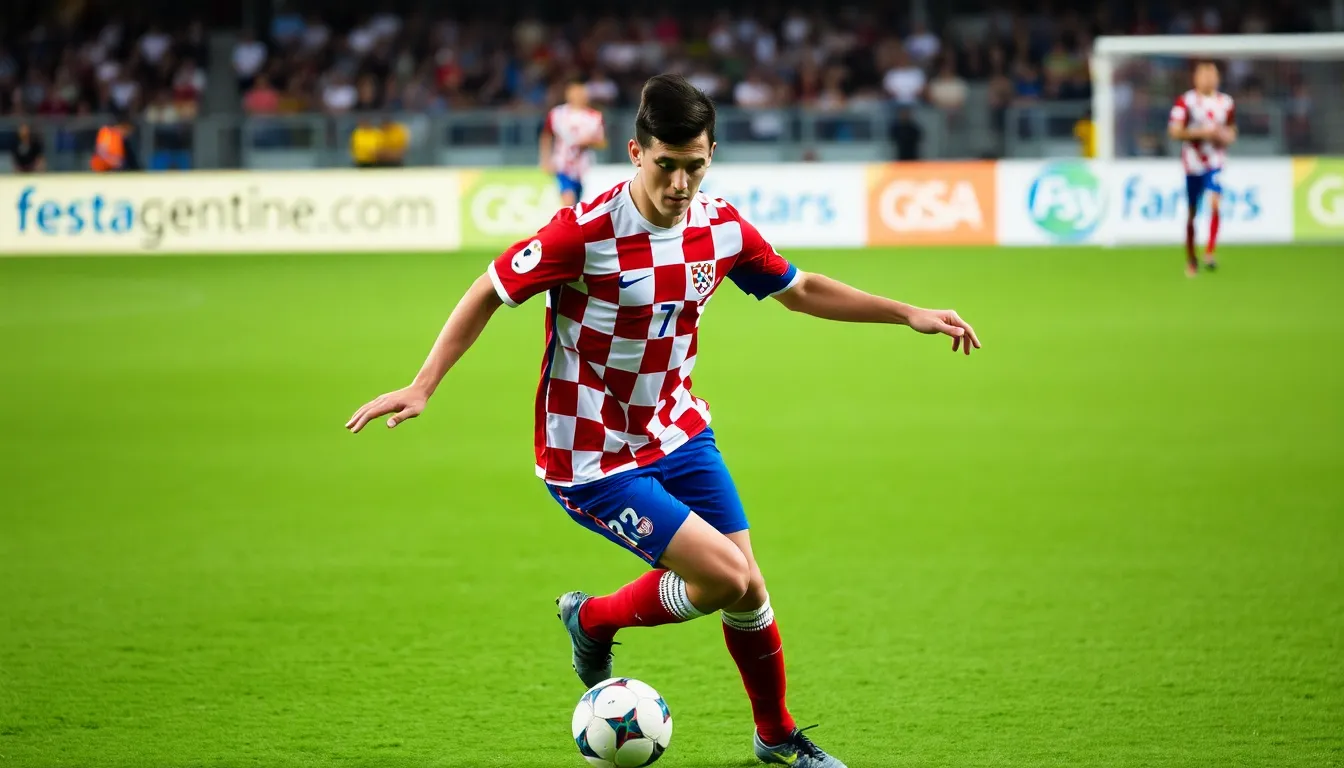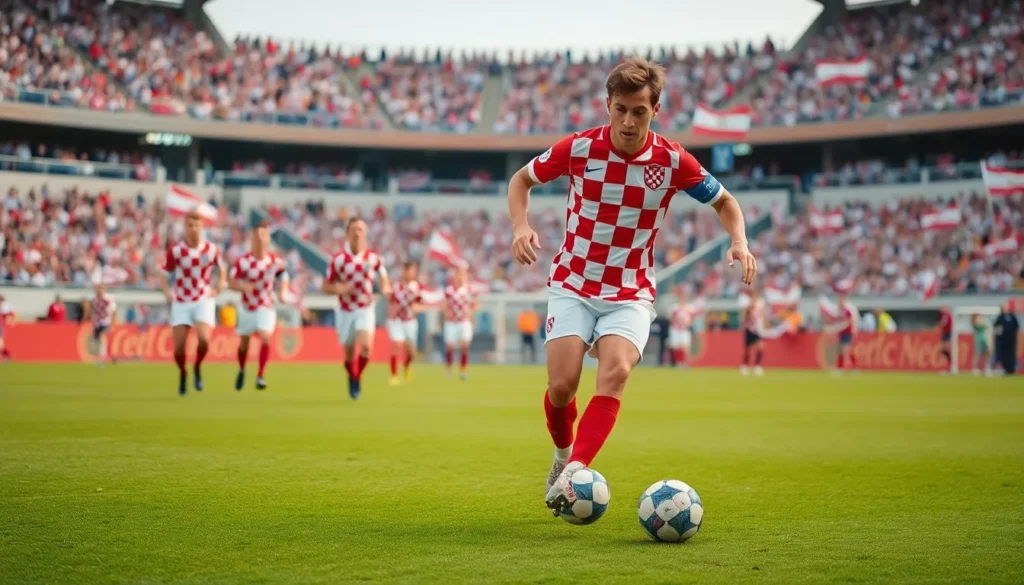Croatia’s national football team has become a force to be reckoned with on the world stage, captivating fans with their skill and strategy. But have you ever wondered what makes their lineup tick? The secret lies in the diverse positions that players occupy, each bringing unique flair and finesse to the game.
Table of Contents
ToggleOverview of Croatia National Football Team
Croatia’s national football team showcases a blend of talent and tactical prowess. The players fill various positions, each bringing distinct skills to the field. Goalkeepers provide a strong last line of defense, often crucial for securing victories. Defenders focus on maintaining structure and thwarting opposing offenses, emphasizing strategic positioning and physical play.
Midfielders play a central role, linking defense and attack. Their ability to control the game’s tempo frequently dictates Croatia’s success. Forwards take charge of scoring opportunities and require agility and innovation. The interplay between these positions forms the foundation of Croatia’s gameplay.
In recent years, Croatia has gained international recognition, thanks to memorable performances in major tournaments. The team reached the FIFA World Cup final in 2018, demonstrating resilience and collaborative effort. This achievement reflects the contributions of each position on the squad.
Statistical analysis reveals Croatia’s strong defensive record and effective goal conversions. The team’s average goals per match often hover around 1.5, while defensive metrics indicate a reliably low goals conceded rate. Such statistics highlight the team’s strategic balance, vital for competing at the highest levels.
Players like Luka Modrić and Ivan Rakitić exemplify Croatia’s midfield strength, while defenders such as Dejan Lovren ensure stability. The blend of experienced professionals and emerging talents positions Croatia as a contender in international football.
Coaching strategies focus on maximizing player strengths while addressing team weaknesses. Continuous development in youth programs helps cultivate future stars and sustain Croatia’s competitive edge. By refining positional understanding, the national team aims to maintain its status as a football powerhouse.
Key Positions in Croatian Football


In Croatian football, each position plays a pivotal role in forming a cohesive and competitive team. The unique talents of players shine through in every match, contributing to the overall success of the national squad.
Goalkeeper Position
The goalkeeper stands as the last line of defense. Their ability to block shots and organize the defense enhances the team’s stability. Croatia’s goalkeepers, such as Dominik Livaković, showcase remarkable reflexes and decision-making skills. Exceptional goalkeeping often results in key saves during tense moments. Successful goalkeepers communicate effectively with defenders, ensuring a united front against opposing attacks.
Defender Position
Defenders form the backbone of the defensive structure. They guard against opposing forwards and maintain tactical discipline. Croatia’s defenders, including Josko Gvardiol and Dejan Lovren, demonstrate strong physicality and positioning. Valuable skills include intercepting passes and winning aerial duels. Effective defenders contribute by initiating offensive plays from the back, thus transitioning the team’s style from defense to attack seamlessly.
Midfielder Position
Midfielders link the defense and attack while orchestrating play. Their vision and passing capabilities ensure seamless transitions during matches. Luka Modrić exemplifies the ideal midfielder with his ability to control the game’s tempo and distribute the ball. Versatile midfielders also contribute defensively, pressing opponents and recovering possession. Strong midfield presence often results in creating goal-scoring opportunities, making this position essential in Croatia’s gameplay.
Forward Position
Forwards are crucial for converting opportunities into goals. This attacking line pressures the opposing defense and significantly impacts the match’s outcome. Noteworthy Croatian forwards, like Andrej Kramarić and Ante Rebić, possess speed and creativity, allowing them to exploit defensive weaknesses. Scoring requires not only individual skill but teamwork to execute strategies effectively. A strong forward unit maximizes Croatia’s potential to achieve victory on the international stage.
Notable Players in Each Position
Croatia’s national football team features exceptional talent across all positions, each player contributing to the team’s success on the international stage.
Goalkeepers Who Made an Impact
Dominik Livaković stands out as a key goalkeeper for Croatia. His agility and quick reflexes provide significant defensive strength. Another notable figure, Danijel Subašić, gained recognition during the 2018 FIFA World Cup for his crucial saves, especially in penalty shootouts. Goalkeepers in Croatia not only defend the goal, but they also effectively organize the backline, ensuring solid communication among defenders.
Defenders to Watch
Josko Gvardiol exemplifies modern defending through his physicality and tactical awareness. Dejan Lovren’s experience adds depth, making him a reliable presence during crucial matches. Both players excel at reading the game and executing strategic tackles. Furthermore, Croatia’s backline demonstrates resilience, often thwarting attacking threats with their coordination and strong positioning.
Midfield Maestros
Luka Modrić embodies creativity and vision in midfield. His passing ability and game intelligence link defense and attack seamlessly. Ivan Rakitić complements him with his strategic movement and technical skills, creating opportunities for forwards. Midfielders in Croatia excel at controlling the pace of the game, which enhances the overall flow and effectiveness of team play.
Strikers Leading the Charge
Andrej Kramarić showcases speed and precision on the attack. His scoring ability makes him a constant threat to opposing defenses. Ante Rebić adds flair and creativity, often delivering clutch performances in high-stakes situations. Together, these strikers utilize their skills to convert chances, demonstrating the dynamic offensive capabilities of Croatia’s national team.
Tactical Formation of Croatia
Croatia’s tactical formation often centers around a 4-3-3 setup, promoting a balanced approach between defense and attack. This formation utilizes four defenders, providing a solid foundation while enabling the midfield to control the game’s tempo. Midfielders play a critical role, linking defensive and offensive phases effectively.
Coaches emphasize positional versatility, allowing players to adapt based on opponent strategies. Key midfielders such as Luka Modrić frequently transition from defense to attack, showcasing exceptional vision and passing abilities. Defenders like Josko Gvardiol focus on both marking opponents and contributing to build-up play.
Forwards in this formation, including Andrej Kramarić, exploit spaces created by overlapping full-backs. Speed and creativity define the attacking flair, with players capable of executing quick one-twos or cutting inside to create scoring chances. Croatia’s tactical flexibility enables adjustments during matches, responding dynamically to different situations.
Statistical performance highlights Croatia’s success in maintaining possession and pressing effectively. During the 2018 FIFA World Cup, the national team demonstrated their tactical prowess, reaching the final with a well-organized structure. Such structures provided both defensive stability and attacking potential, ensuring sustained pressure on opponents.
Ultimately, this commitment to tactical discipline reflects in Croatia’s growing stature on the international stage. Player roles are clearly defined, leading to enhanced coordination and teamwork. Croatia’s strategies, shaped by rigorous training and insightful coaching, continue to secure the team’s competitiveness and influence in global football.





